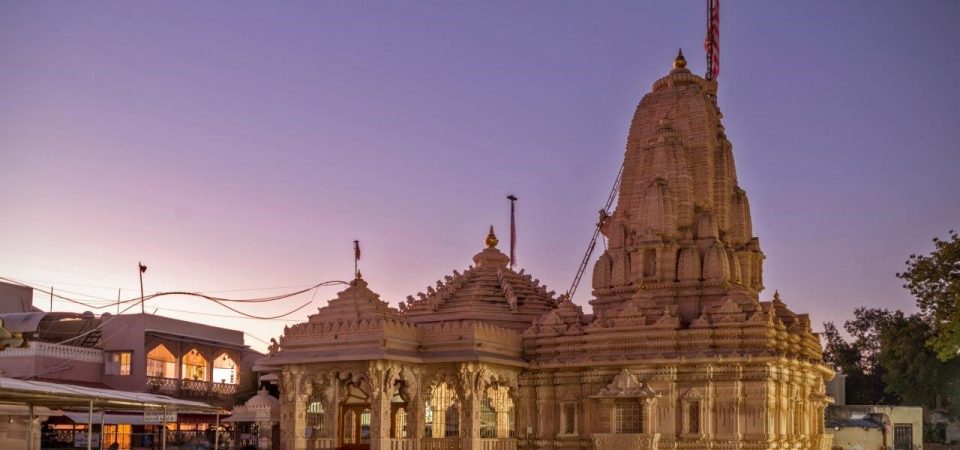PILGRIM PURITY – SPIRITUAL RETREAT
Duration
Max People
Min Age
Tour Type
Reviews
No reviews yetOverview
Package Inclusion
- Accommodation on Double Occupancy Room
- Meal Plan – 04 Lunch + 03 Dinner + 04 Breakfast [Mixed Meal]
- Pick Up & Drop – Ex. BHUJ
- Transportation in an AC Vehicle, inclusive of fuel, parking, Toll and Driver Allowance.
- Bird Watching on a Special Jeep Tour at Chhari Dhand.
- All transfers & sightseeing as per the itinerary.
- All applicable taxes.
Package Exclusion
- Train / Air Tickets / Entry fees at places of tourist Interest.
- Other Activities at the Hotel & Tourist Places.
- Monument entry fee, guide fee, camera fee, govt. visitor fees.
- Tips, Coolie, Laundry, Cold drink and other expenses of personal nature
- All that is not included above.
Tour Plan
Day 1 : ARRIVAL AT BHUJ – ARAL
Welcome to KUTCH ! Arrival at Bhuj Airport / Railway Station, proceed for Infinity Resort at Aral. Check in at Resort at Aral and get refreshed. Further move on to visit places of interest as per details given below :
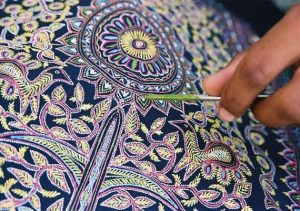
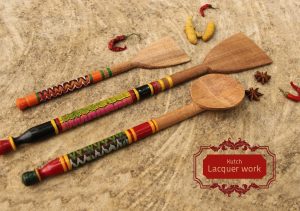
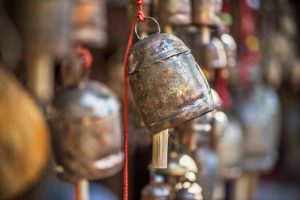
Nirona Village
Nirona village is where you can find three very unique local art forms — one of which even made its way to The White House. Popular Rogan art, a legacy art form that has been taken forward, for the past 300 years, Resembling the characteristics of embroidery, Rogan art is when you paint on fabric using a thick brightly coloured castor seed oil. To prepare the paint, castor oil is heated for more than 12 hours till it catches fire. It is then mixed with cold water and vibrant color to give a thick residue called rogan. The artist then uses a six-inch thick-metal needle to paint with a fine thread of rogan on a piece of cloth. Next in the list is The Luhars of Nirona, and their popular Copper Bell art. Preserving it for the last 10 or so generations, many families in Nirona get their livelihood totally out of this. Copper Bell art has mainly originated from Sindh and even today many villages around the border area inside India and Pakistan make it. Third is the art of Lacquer. Practised by a semi-nomadic tribe called Wada, in the Banni area in and around the villages of Nirona and Bhirandiayara, Lacquer art turned out to be yet another distinction. The art and the tribe practising it is the original migrants from beyond Sindh, before partition.
Kutch Fossil Park
Kutch Fossil Park is a museum situated near Dhinodhar hills. Mohan Sinh Sodha, the man who single-handedly worked and is continuously adding to the collection of the several fossils that are on display in the small 2 rooms' exhibition area. He has been doing this for almost 4 decades now since his first rendezvous with a fossil called Ammonite in the 70s. The discovery of that fossil changed his life and he went on to collect many of the fossils ranging from plants, fruits, gems, animals, reptiles etc. The most astounding fossil exhibited here is of the Dinosaur and its egg that has been collected over the time in bits and pieces and then restructured to give a good shape. Recently he found a Sea cow fossil, which was reconstructed with the help of the Roorke Institute of Technology.
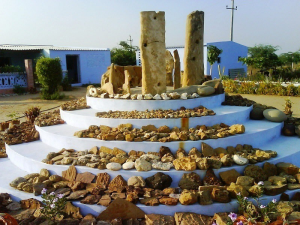

Dhinodhar – Than Temple
Dhinodhar Hill, is a volcanic plug rising above the local sandstone and composed of relatively fresh, very fine-grained, black to dark grey, largely aphyric (largely without phenocrysts), aphanitic rock, rising to an elevation of 386 meters it shows several near- vertical, dike-like tabular intrusions with well-developed columnar jointing, and a roughly circular ring breached to the east, enclosing a pronounced crater-like central depression. Dhinodhar is not a vent itself but the eroded remains of a subvolcanic intrusion emplaced at the time of the Deccan Traps.
Back to Resort at Aral, overnight stay at Aral.
Day 2 : ARAL - WEST KUTCH - ARAL
Next day energise with sun-up, after having breakfast, move on to West Kutch to visit places of interest as per details given below :

Chhari Dhand – Bird Santancury
Chhari means "salty" and Dhand means "shallow wetlands". This seasonal desert wetland gets swampy during the monsoon season and is fed by north-flowing rivers and surrounding hills. Bird watchers and ornithologists will find this place a paradise, as it attracts numerous species of migratory birds every year during the monsoon and winter seasons, making it a potential candidate for inclusion in the Ramsar Convention due to its rich biodiversity. The wetland is home to endangered species such as Dalmatian Pelican, Oriental Darter, Black-necked Stork, and Indian Skimmer, while thousands of flamingos, Common cranes, Painted storks, Raptors, and Spoonbills among others can also be spotted here. Additionally, the wetland also attracts chinkara, wolves, caracal, desert cats, and desert foxes, apart from endangered birds.
Matanamadh (Maa Ashapura Darshan)
Mata no Madh is a village in Lakhpat Taluka of Kachchh district, Gujarat, India. The village lies surrounded by hills on both banks of a small stream and has a temple dedicated to Ashapura Mata, the household deity of former Jadeja rulers of Kachchh State. As the name suggested she is the goddess who fulfils the wishes and desires of the peoples. It is said that Ashapura Mata has 7 pairs of eyes which is a very unique fact about her.
Narayan Sarovar
According to Hindu theology there are five sacred lakes collectively called Panch-Sarovar i.e. Mansarovar, Bindu Sarovar, Narayan Sarovar, Pampa Sarovar and Pushkar Sarovar. They are also mentioned in Shrimad Bhagavata Purana. One of the holy rivers of India, Sarasvati River had an out let in to sea near present-day Narayan Sarovar and waters of lake were filled with holy waters of River Saraswati, that is why this place was and is still considered as one of the five holy lakes by Hindus.

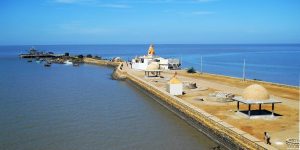
Koteshwar
The story of Koteshwar begins with Ravana, who won it as a boon from Lord Shiva for an outstanding display of piety, this Shiva linga of great spiritual power. But which Ravana in his arrogant haste, accidentally dropped and it fell to earth at Koteshwar. To punish Ravana for his carelessness, the linga turned into a thousand identical ones, some versions of the story say ten thousand, some a million. Unable to distinguish the original, Ravana grabbed one and departed, leaving the original one here, around which Koteshwar Temple was built.
Lakhpat
Lakhpat is a sparsely populated town and sub-district in Kachchh district in the Indian state of Gujarat located at the mouth of Kori Creek. Historically it has been very important trading post connecting Gujarat to Sindh. The gradual decline of Lakh fort Town started when an earthquake diverted the flow of the Sindhu River away from it. It has a scenic landscape with a fort in ruins along with tomb and a mosque noted for their fine carvings. A nearby gurudwara is historically significant, as Guru Nanak who was the founder of the religion of Sikhism and the first of the eleven Sikh Gurus is believed to have visited this site.
Back to Resort at Aral, overnight stay at Aral.
Day 3 : ARAL - NORTH KUTCH - ARAL
Next day energise with sun-up, after having breakfast, move on to North Kutch to visit places of interest as per details given below :
Kalo Dungar [Black Hill]
Kalo Dungar or Black Hill is the highest point in Kutch, Gujarat at 462 m (1,516 ft). This is probably the only place in Kachchh from where a panoramic view of the Great Rann of Kutch is possible. Kalo Dungar magnetic hill is a popular optical illusion where vehicle seems to defy the gravity and roll up the slope.
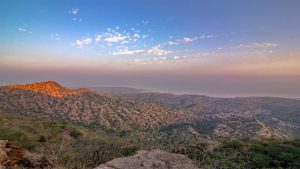
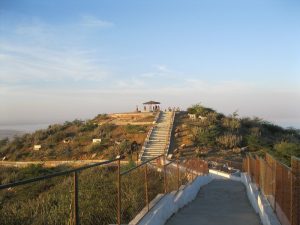
Dutt Temple
The 400 year old "Dattatreya Temple" is the most famous attraction on Kalo Dungar. Local belief is that Lord Dattatreya when walking on earth rested on these hills where he encountered hungry jackals to whom he offered his body as food. Since last 4 centuries it's a practice of the temple priests to feed jackals everyday at noon. The priest intimates the jackals by banging on a plate with a spoon.
White Desert of Kutch
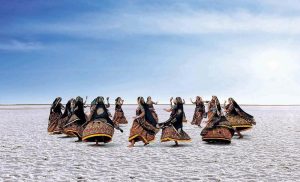
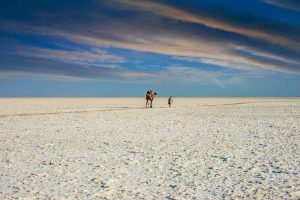
The Rann was a once a shallow part of the Arabian Sea, until a geological shift closed off the connection with the sea. The region became a seasonal marshy salt desert over the years. During monsoons the region fills up with water and forms a wetland. In the summer the water dries to create a bed of white salty land. The sunset at the White Rann of Kutch is mesmerizing beyond words. One can see the transformation of the sun which shines bright and high during the daytime, slowly starts to mellow down and descend at the onset of the evening.
Back to Resort at Aral, overnight stay at Aral.
Day 4 : ARAL - BHUJ LOCAL SIGHTSEEING – DEPARTURE
Next day energise with sun-up, after having breakfast check-out from Resort at Aral and move on for Bhuj and visit places of interest as per details given below :
Aina Mahal
Aina Mahal palace is a two storied mansion built with stones and designed by stone carvings and wood fretwork. The design of the palace is in Indian style and the decoration is European. The palace floors are made with blue delftware tiles and the marble walls of the palace are decorated with mirrors which are separated by gilded frames. These walls are adorned with fitted shelves on which glass and ceramics were displayed. The rooms were illuminated by hanging candelabra and chandeliers with shade of Venetian glass. The pillars and roofs were ornamented with gold. The space between pillars and walls are filled with triangular mirror compartments.

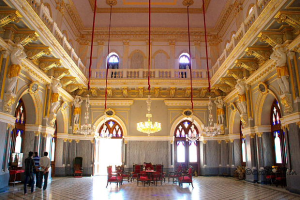
Prag Mahal
Prag Mahal is one of the architectural wonders in India. Built-in the 19th century, the grand palace boasts of Gothic-style windows and Corinthian pillars around it. The opulent Mahal has the second tallest clock tower in the country which offers an amazing view from the top. A part of the palace has been converted into a museum with archives and personal items of the royal family on display. Imposing and beautiful in itself, the resplendent palace is made mostly out of red sandstone. There are intricate carvings done on the walls with beautiful art, and the most amazing thing is the jaali work on the jharokhas, those are exquisite in appearance. Prag Mahal has also been very famous in Bollywood and has been a part of several Bollywood blockbusters including Lagaan, Hum Dil De Chuke Sanam, and numerous Gujarati films as well.
Swami Narayan Temple
Made of marble, intricate carvings adorn the pillars and ceiling of the most expensive temple built in the state of Gujarat recently.
Smruti Van
The Smritivan Earthquake Museum, Bhuj is situated on the Bhujiyo Dungar. It was constructed in remembrance of the victims of the devastating 2001 Gujarat earthquake. The Sun-point at the memorial is situated on top of Bhujiyo Dungar, providing a panoramic view of the city as well as breathtaking views of the sunrise and sunset.
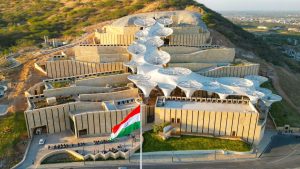

Regional Science Centre
Regional Science Centre - Bhuj located on the bottom of Bhujio hill in Bhuj City is one of the innovative hub for exploring Science. Regional Science centre Bhuj is spread over 10 acres of land and consist of six different science theme based gallery i.e. Marine navigation, Energy Science,Field Medal, Bonsai, Nanotechnology and Space Science. Along with this a unique observatory for viewing stars and planets at night time, 3 d theatre, marine simulator and submarine ride.
Vande Mataram Memorial
The Vande Mataram Memorial is a unique national Monument seeking to immortalize the most momentous episodes in India’s freedom struggle from British Rule. Vande Mataram Memorial is spread over 12 acres of land in the Bhuj region of Gujarat, comprising of a Parliament Building, India Gate, Yellow Fort and open grounds for all to enjoy. It has a total of 17 rooms with several historical depictions from 1600 to 1947 through 4D technique in 17 episodes. The complex also has a park, a magnificent statue of Bharat Mata and a craft park besides several other attractions.
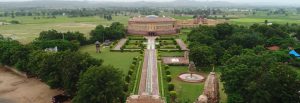
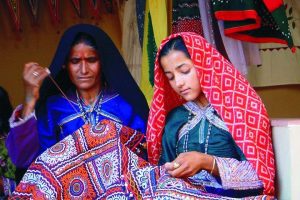
Bhujodi Crafts Village
Bhujodi is one of the major textile and craft hubs of the region, and a veritable draw for the traveller. A large part of the Vankar community resides here. These are specialists in weaving, tie and dye and other craft forms that make the backbone of Kutch’s handicraft scene. There are specific craft and arts centers around Bhujodi, but even if you into any house, you can be assured that the family will be involved in some kind of handicraft. The Ashapura Crafts Park, Shrujan and Hiralaxmi Craft Park lie in this region.
Further transfer you to Bhuj airport or railway station, there on get back to home with most memorable and most enjoyable travel experience with MEGONIC HOLIDAYS.
Special Note
- Rooms are subject to availability at the time of Confirmation.
- The above mentioned rates for the package are for Base Category in Hotels.
- Early Check in on Day – 1 is subject to availability. [Check In 12:00 PM]
- 50% Advance Payment at the time of Confirmation and 50% balance payment before 10 days of scheduled arrival date.
- These rates are not valid for Peak Dates i.e. Diwali, Christmas, Full Moon, Festival dates, etc.
General Conditions & Remarks:
- Any Changes or Cancellation after Cancellation Dateline will result in Cancellation Charges.
- No Refund for any unutilized service or sightseeing.
- The package rates mentioned are subject to change due to any change in fuel cost, taxes, etc.
- If there are any surcharges in above then it can be applicable at the time of booking.
- Rates will change if no of pax increases / decreases from what is mentioned
- Rates might change if travel dates are changed
- Any dispute arising in above mentioned terms & condition is subject to Bhuj Jurisdiction only.
Cancellation Charges:
- 100% Refund if cancelled 45 days prior to scheduled arrival date.
- 90% Refund if cancelled more than 30 days prior to scheduled arrival date but less than 45 days prior to scheduled arrival date.
- 60% Refund if cancelled more than 15 days prior to scheduled arrival date but less than 30 days prior to scheduled arrival date.
- No Refund if cancelled less than 15 days prior to scheduled arrival date
- Changes in dates, or guest names would be treated as Cancellation.

